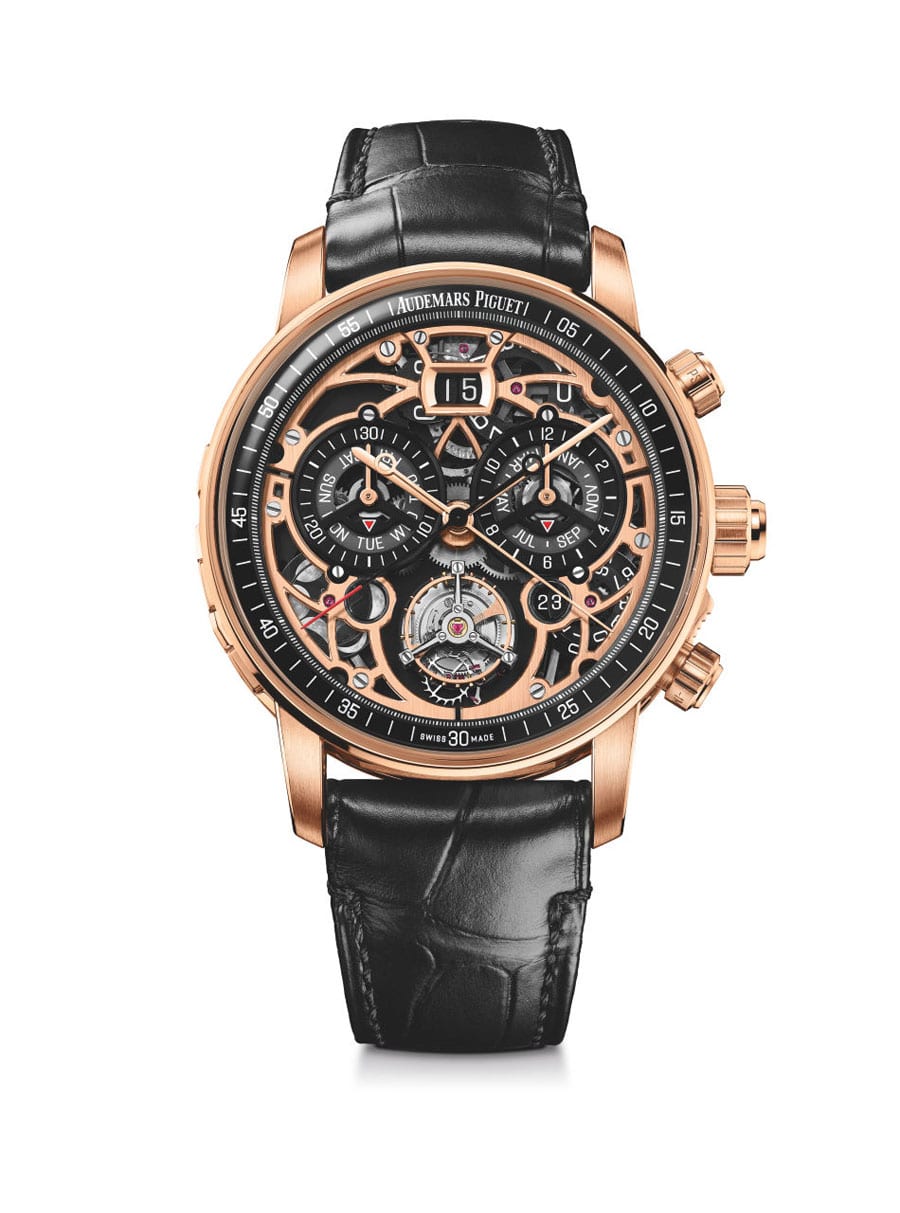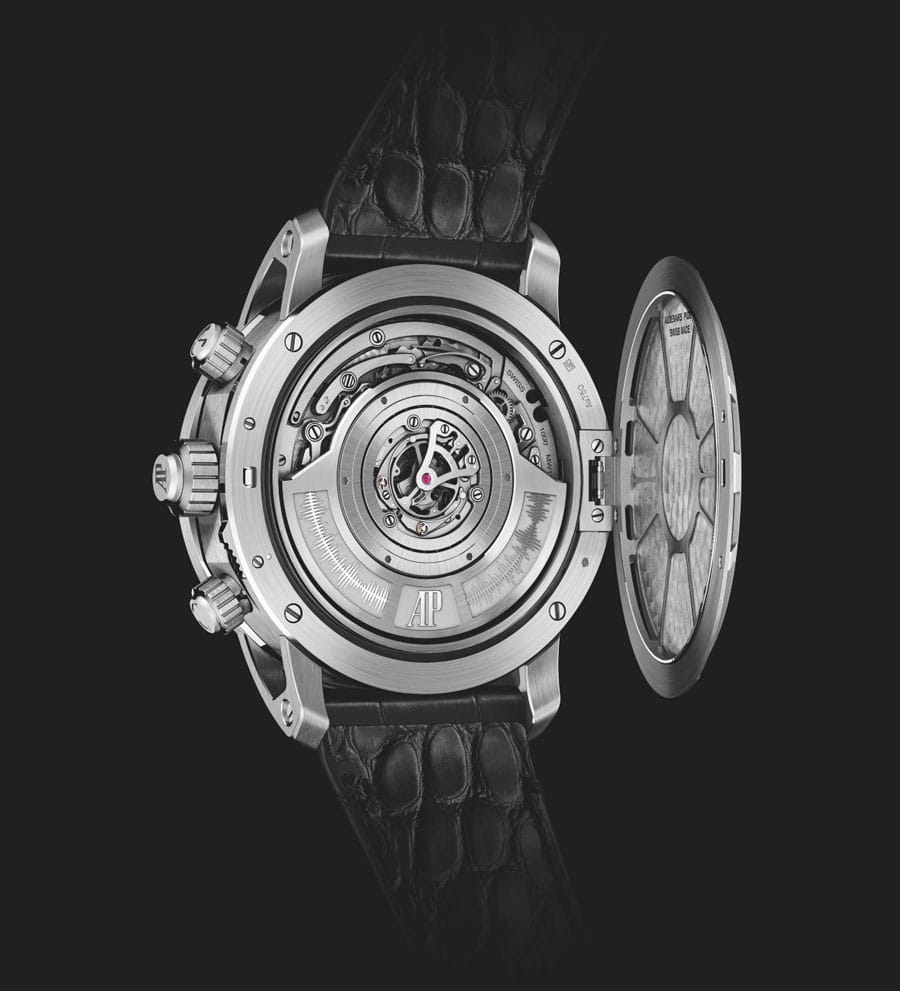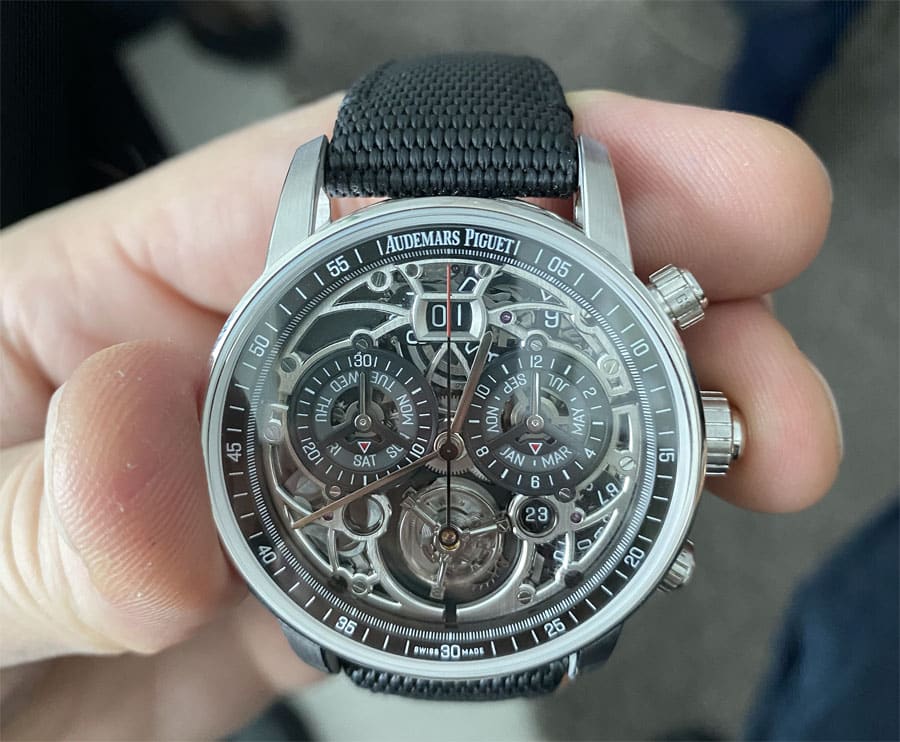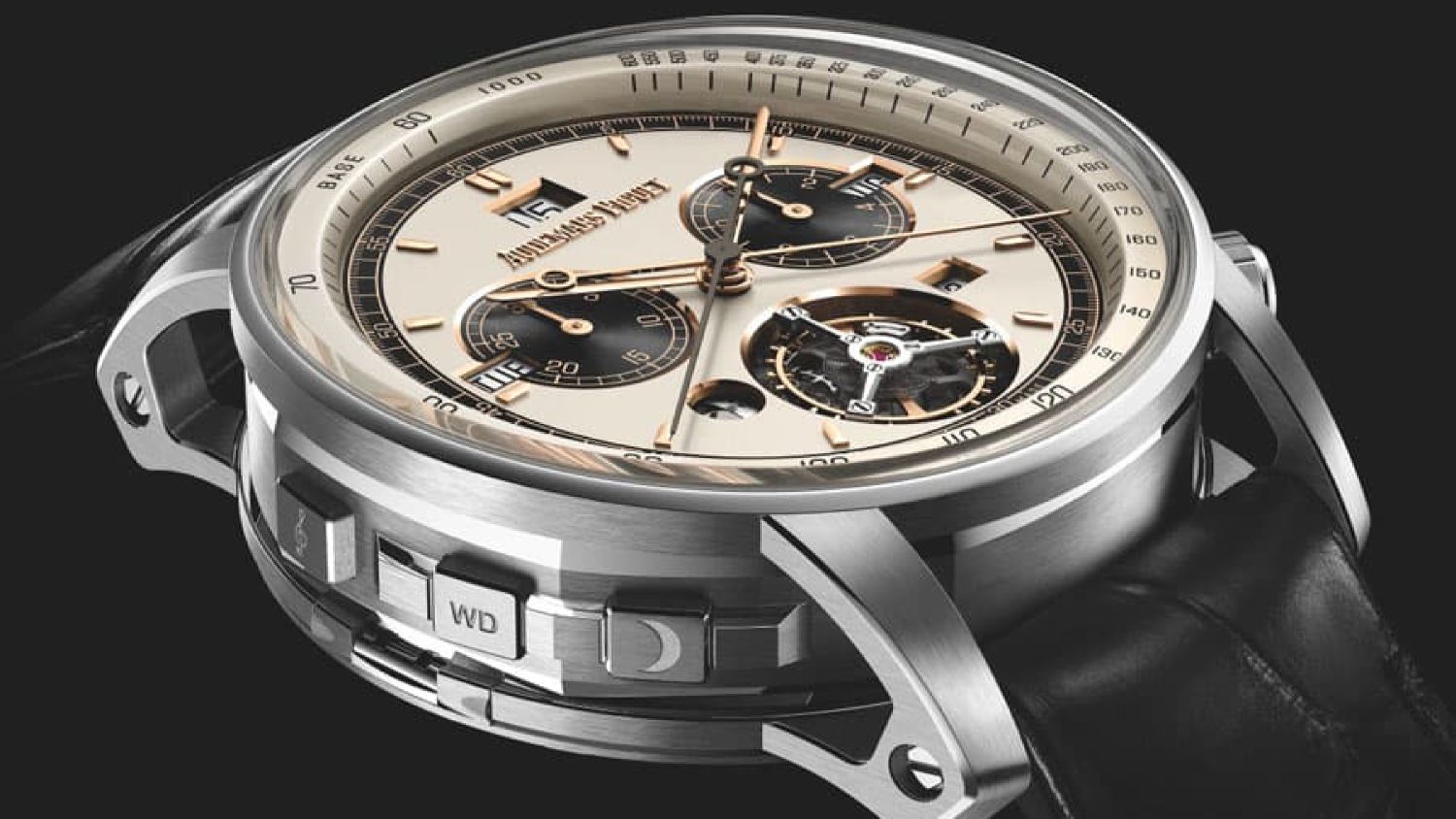One might have imagined that Audemars Piguet's most complicated watch would be a Royal Oak or even the Royal Oak Offshore. But with its latest watch being unveiled, turns out it is the Code 11.59 by Audemars Piguet that has served as the canvas for its most complicated watch. Seven years in development, the Code 11.59 Ultra-Complication Universelle RD#4 features, among other things, a split-seconds chronograph (rattrapante) with an integrated flyback function, a perpetual calendar that works up to the year 2400, a striking mechanism with Grande Sonnerie, Petite Sonnerie, and minute repeater, and a flying tourbillon.
 Audemars Piguet Code 11.59 Ultra-Complication Universelle RD#4
Audemars Piguet Code 11.59 Ultra-Complication Universelle RD#4
The manufacturer lists a total of 40 functions for the watch, of which 23 are complications and 17 are “special technical devices”. That alone is remarkable enough. But Audemars Piguet wasn't just putting a lot of mechanics in one watch. According to Giulio Papi, technical director of the manufactory, a masterpiece should fulfill three basic characteristics: it should be easy to use, as flat as possible, and not have an overloaded dial. By those yardsticks, the Code 11.59 Ultra-Complication Universelle RD#4 was a success: With a case height of 15.55 millimeters, the 42-millimeter watch in white or red gold is remarkably flat given all its complications and fits well on the wrist. A weight of 180 grams is also acceptable.
Adjusting the functions is really easy: AP has managed to do without recessed correction pushers, so one doesn't have to fiddle with a small metal pen or another pointed object to adjust the calendar functions. There are three pushers on the left edge of the case: The middle one corrects the day of the week at 9 o'clock, the lower one the
moonphase at 7.30. The upper one is used to start the minute repeater and thus replaces a slider.
 The correction pushers on the left of the case
The correction pushers on the left of the case
On the right there are three crowns, each with an integrated coaxial pusher. The upper one is used to set the type of chime: Grande Sonnerie (hours and quarters chime by itself), Petite Sonnerie (hours chime by itself) or silence. The pusher serves as usual to start and stop the chronograph. The middle one is the crown for setting and winding the hands (rarely needed as it is an automatic watch). Its pusher operates the split-seconds mechanism. Finally, the lower crown is used to adjust the month at 3 o'clock: This works in both directions, whereby the two-digit year display at 4 o'clock moves ahead even when you go from January to December. The pusher is used to reset the flyback chronograph, which immediately starts up again at zero without stopping.
There are four variants in total of the Audemars Piguet Code 11.59 Ultra-Complication Universelle RD#4: Two with a skeletonized dial, one in white gold and one in rose gold, and two white gold models with a closed dial, one black and one beige. The latter two in particular seem surprisingly clear for such a complicated watch. The dial is dominated by the two counters for the stopped minutes at 9 o'clock and hours (at 3 o'clock) as well as the opening for the flying tourbillon at 6 o'clock. The calendar functions are distributed from the day of the week at 9 o'clock to the outsize date at 12 o'clock, the month at 3 o'clock, the two-digit year at 4 o'clock, and the moonphase at 8 o'clock.
 The pink gold variant
The pink gold variantTurn the watch over and you see a closed bottom, which can be opened with a small slider on the left edge of the case. The lid pops out and reveals not just its finely guilloched interior with air slots to amplify the sound, but also the movement. The self-winding manufacture Caliber 1000 consists of 1140 individual parts, including 90 artificial ruby jewels, and offers a power reserve of 64 hours. It oscillates at a leisurely 3 Hertz (= 21,600 vibrations per hour) and is only 8.75 millimeters high with a diameter of 34.3 millimeters.
 The secret floor of the watch
The secret floor of the watchThe universal RD#4, as the watch is nicknamed, also combines the supersonnerie technology introduced in 2015 in the RD#1, which ensures a clearly audible sound (among other things thanks to a soundboard), the ultra-flat design of the perpetual calendar introduced in 2018 (RD#2) and the oscillator with increased amplitude (RD#3) from 2022. The percussion has its own barrel, which is wound alternately with the main barrel. The soundboard, to which the gongs are also attached, was redesigned for the Universal: It is now made of sapphire crystal and is only 0.6 millimeters thick. The view of the rotor is also remarkable: It is made of platinum and decorated with engraved sound waves. The rattrapante mechanism with the pincers typical of this device is integrated into the center of its large ball bearing. This construction, as well as the fact that the functions of the perpetual calendar are housed on just one level, led to a significant reduction in the overall height.
Finally, the perpetual calendar shows another refinement: Unlike most perpetual calendars, it does not have to be corrected in the year 2100, but only in the year 2400. It, therefore, takes into account the fact that the leap year in the Gregorian calendar falls out in the years that are divisible by 100 but not by 400. The fact that most perpetual calendars will have to be corrected by hand on March 1, 2100, has hardly bothered anyone since most of us will not live to see this date. However, it is a subject that is increasingly becoming an important topic for the developers of new perpetual calendars in the coming decades. Audemars Piguet has already responded to this.
 The Calibre 1000 is made up of more than 1000 parts
The Calibre 1000 is made up of more than 1000 parts
Incidentally, the name Universelle of the new Ultra-Complication refers to another ultra-complicated watch in the history of Audemars Piguet: Just like its successor, the Grande Complication Universelle from 1899 had a Grande and Petite Sonnerie in connection with a minute repeater, a split-seconds chronograph and a perpetual Calendar, also in her case the movement was enclosed in a platinum officer's case with spring cover. In addition, it had an alarm clock and a flashing second (Foudroyante).
 The Universal pocket watch from 1899
The Universal pocket watch from 1899
The Audemars Piguet Code 11.59 Ultra-Complication Universelle RD#4 is not limited to a specific number but is only produced in small numbers, understandably given its complexity. In 2023 there should be seven pieces, in 2024 twice as much. Like all Audemars Piguet complications, it is manufactured in the Le Locle factory, which opened in 2021, while the “simpler” watches continue to be manufactured in Le Brassus, where a new factory is also being built. The price of the Universal is just as exclusive as the watch and is between 1.45 and 1.6 million Swiss francs, depending on the version. book
Images: Courtesy Audemars Piguet














